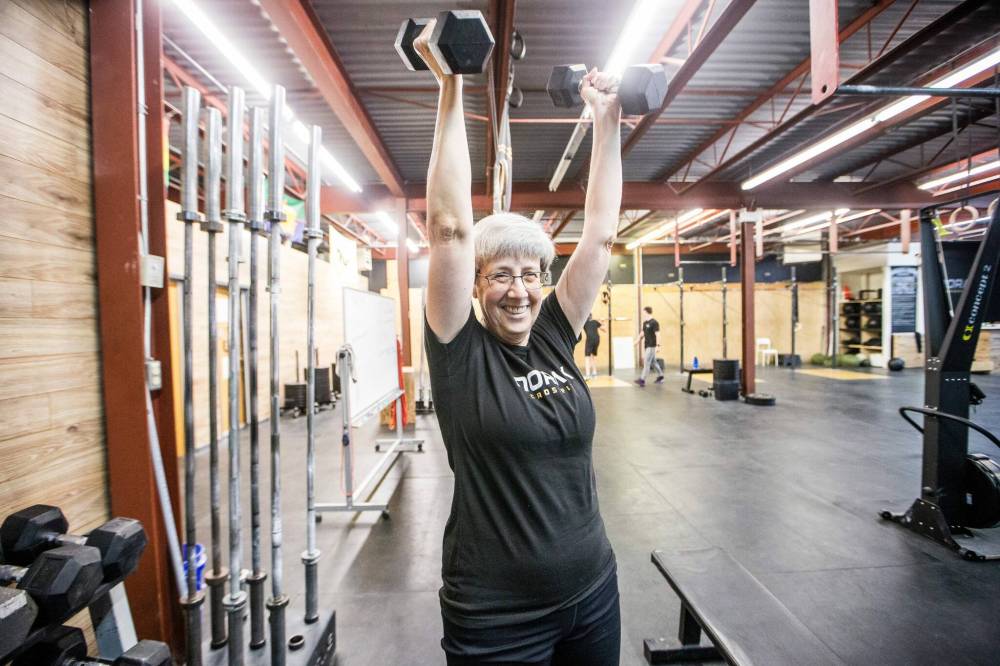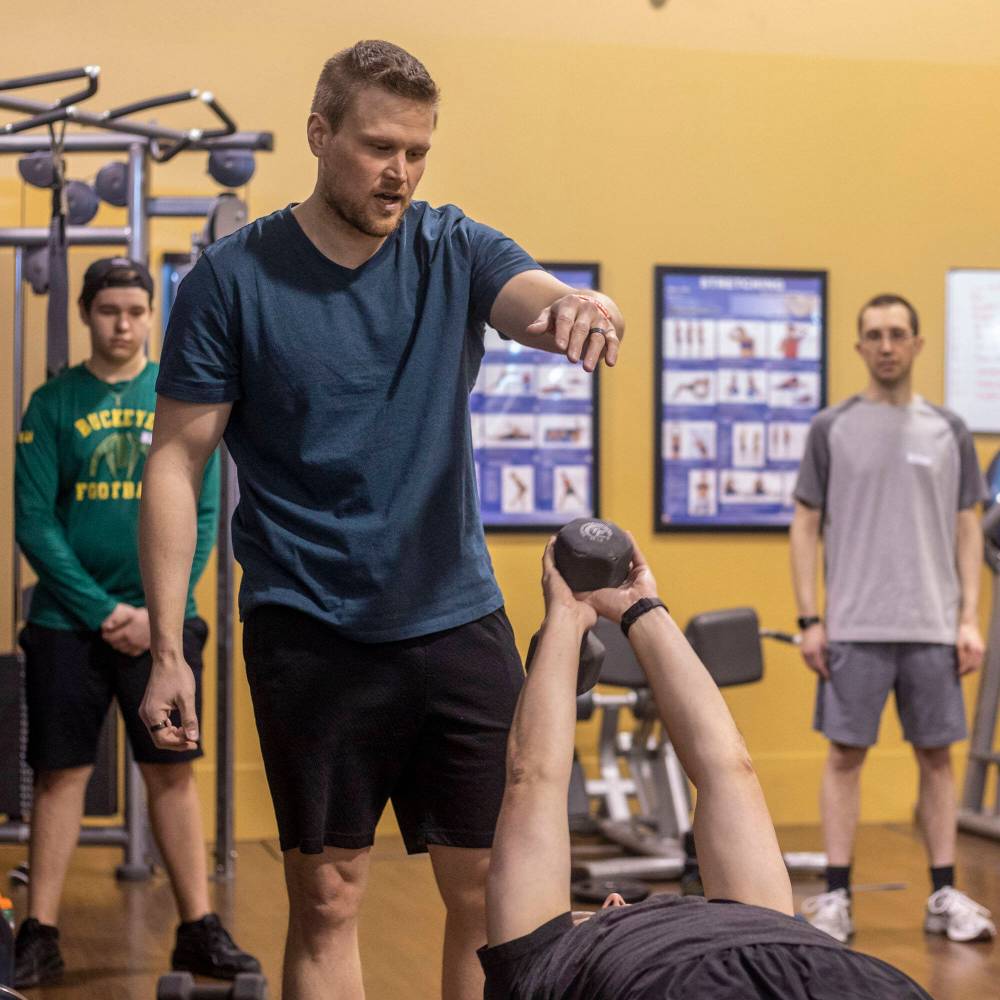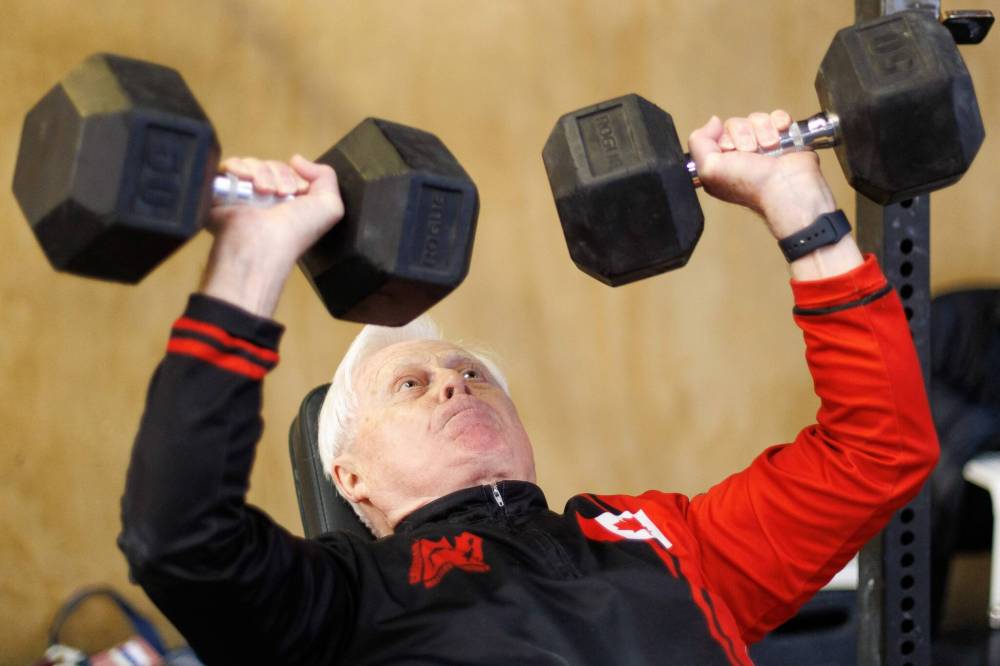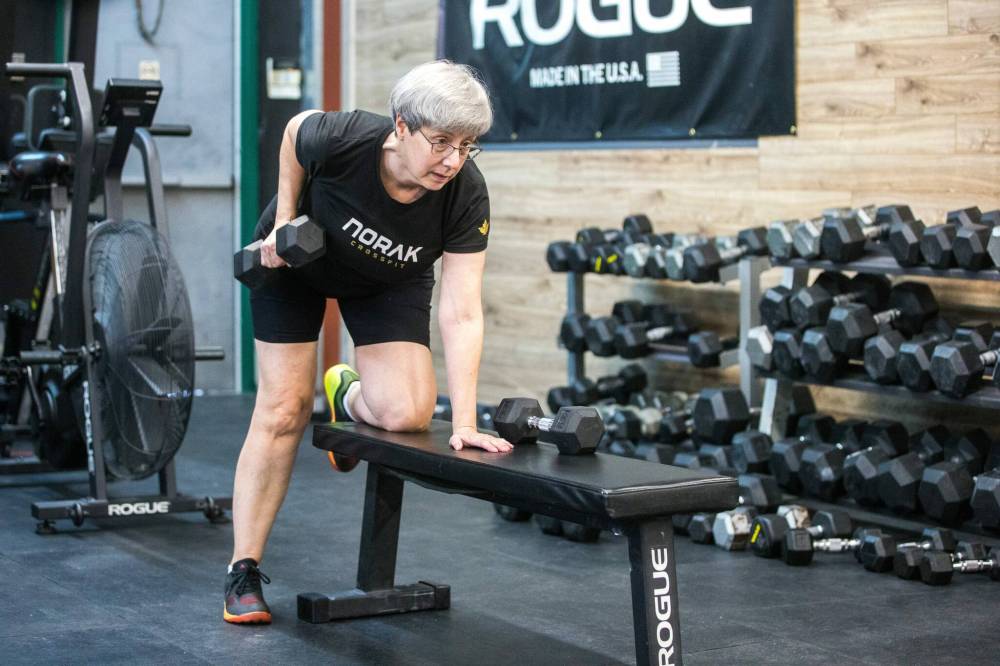Bone deep
There is no cure for the ‘silent thief’ of osteoporosis, but medication and lifestyle choices can help
Advertisement
Read this article for free:
or
Already have an account? Log in here »
To continue reading, please subscribe:
Monthly Digital Subscription
$1 per week for 24 weeks*
- Enjoy unlimited reading on winnipegfreepress.com
- Read the E-Edition, our digital replica newspaper
- Access News Break, our award-winning app
- Play interactive puzzles
*Billed as $4.00 plus GST every four weeks. After 24 weeks, price increases to the regular rate of $19.00 plus GST every four weeks. Offer available to new and qualified returning subscribers only. Cancel any time.
Monthly Digital Subscription
$4.75/week*
- Enjoy unlimited reading on winnipegfreepress.com
- Read the E-Edition, our digital replica newspaper
- Access News Break, our award-winning app
- Play interactive puzzles
*Billed as $19 plus GST every four weeks. Cancel any time.
To continue reading, please subscribe:
Add Free Press access to your Brandon Sun subscription for only an additional
$1 for the first 4 weeks*
*Your next subscription payment will increase by $1.00 and you will be charged $16.99 plus GST for four weeks. After four weeks, your payment will increase to $23.99 plus GST every four weeks.
Read unlimited articles for free today:
or
Already have an account? Log in here »
Hey there, time traveller!
This article was published 15/01/2024 (648 days ago), so information in it may no longer be current.
Silenced symptoms
Downplayed. Dismissed. Devalued. In this monthly Free Press series, we’ll explore underdiagnosed, underrecognized and undertreated health issues disproportionately affecting the lives of women, nonbinary and trans people. We will share stories and lived experiences, while also raising awareness. In this instalment, we look at osteoporosis.
It’s a disease that affects 2.3 million Canadians and is most common among those aged 50 and older.
Often referred to as the “silent thief, owing to its insidious nature, osteoporosis is caused by a loss of bone mass or changes to bone structure resulting in an increased risk of fractures due to falls and even coughs or sneezes.
According to Osteoporosis Canada, at least one in three women and one in five men will break a bone because of osteoporosis in their lifetime.

There are many things that can cause bone loss, according to Lora Giangregorio, a professor and Schlegel Research Chair in Mobility and Aging in the department of kinesiology and health sciences at the University of Waterloo.
“We lose bone with age,” she says. “Changes in hormone levels in men and women can cause bone loss. Certain medications and health conditions can be associated with bone loss or an increased fracture risk, such as steroid medications, rheumatoid arthritis or diabetes.

“People who do not get enough calcium, vitamin D, or calories can experience bone loss, as can people who consume too much alcohol. There are also people who are genetically predisposed to developing osteoporosis.”
The most common injuries associated with the bone disease are in the wrist, hip, spine and shoulder. The disease develops gradually over several years and is often only diagnosed after a fall causes bone breakage.
There is no cure for osteoporosis, but symptoms can be managed with medicine and lifestyle changes.
One of the ways to reduce the risk of bone loss is to exercise, concentrating specifically on weight-bearing exercise.
According to Giangregorio, all adults, no matter their age, should do strength or resistance training exercises at least twice a week.
“Examples include squats or sit-to-stands, lunges, dead lifts, pushups (wall, counter, floor), bent-over dumbbell rows and shoulder presses.
“The exercises should feel like hard work, such that you can only do six to 10 repetitions of each exercise with good form before your muscles fatigue,” she explains.

Mitch Calvert of Calvert Fitness says incorporating weight training — also referred to as strength training or resistance training — can increase bone density.
“Just like anything, if you don’t use it, you lose it,” he says. “Bones can atrophy as a product of aging, when they aren’t pushed and tested.”
When you apply resistance against your muscles, as you do when lifting weights, your bones have to work alongside your muscles. As the muscles apply tension to the bones, it stimulates the bones to produce more bone tissue, increasing the strength and density of the bone.
Calvert notes a positive shift in the perception of weightlifting.
“Strength training was seen as something for body builders or for 20-somethings, but according to the latest science, people in their 80s who have picked up a strength-training routine twice a week showed an increase in bone density and muscles,” he says, referring to a paper published in the International Journal of Sport Nutrition and Exercise Metabolism in October 2023.
Former cross-country skier Doug Sinclair, who turned 81 in September, agrees.

Sinclair lifts weights four days a week — a day of upper body, a day of squats, a day of CrossFit circuits and a day of snatching or clean and jerking — at Norak Crossfit in the Exchange District where he is one of 22 in the gym’s masters program, for athletes 35 and over.
“With weightlifting, my bone density has not declined with age.”
Sinclair came to weightlifting late.
“I started weightlifting at 62. I did it to become stronger for cross-country skiing and it turns out I was better at weightlifting. Cross-country skiing just went by the wayside,” he says, laughing.
Mitch Calvert’s beginners guide
to lifting
If you’re starting from scratch, your own body weight is often enough resistance to get the benefits early on. Muscle-building exercises that rely on your own body weight — think pushups (modify from your knees or to an elevated surface if needed), planks and squats — can be incredibly effective when done correctly and consistently.
If you’re starting from scratch, your own body weight is often enough resistance to get the benefits early on. Muscle-building exercises that rely on your own body weight — think pushups (modify from your knees or to an elevated surface if needed), planks and squats — can be incredibly effective when done correctly and consistently.
A simple routine to try is setting a timer for 10 minutes and going through as many rounds as possible of:
- 10 squats
- 10 pushups
- Plank for 30 seconds
- 10-20 glute bridges
Rest and repeat
If you’ve never strength-trained before, consider hiring a certified personal trainer, either virtual or in person, to create a training plan and guide you through the exercises.
They’ll be able to teach you the proper form and set up a program tailored to your needs. An orientation session might be enough.
When you’re ready to graduate from body-weight-only routines, you can expand your at-home workout options with dumbbells. A beginner’s set of adjustable weight dumbbells can give you a range of weights to work with.
Here’s a simple beginner’s strength routine using just dumbbells:
Rotate between Workout A and B and aim for at least three per week (aiming for four)
Workout A
(Aim for three sets per exercise, with 8-15 reps per set)
- Chest press
- Back rows
- Side raises
- Goblet squat
- Stiff-legged dead lifts
- Curls
Workout B
- Flys
- Pullovers
- Arnold press
- Split squat or reverse lunge
- Sumo squat
- Tricep extensions
Go to mitchcalvert.com for more.
Nowadays Sinclair competes regularly in weightlifting competitions, winning 11 times at the Canadian Masters and five times at the Pan Am Masters Games.
Last summer he hiked the Durrand Glacier in Revelstoke, B.C. and credits his workouts with helping him keep pace with his 60-year-old nephew.
“No question — if it wasn’t for weightlifting, there would be no way I could have gone hiking for five days. We would do anywhere from five to seven hours a day.
“Weightlifting has allowed me to do many things. Let’s put it this way: there are not many 81-year-olds in Winnipeg doing what I am doing.”
But can weight training alone combat bone loss?
“Studies have shown that combining resistance training with impact exercise may result in better bone density than doing no resistance and impact exercise. (This is) often a result of preventing bone loss but may result in small increases in bone mass,” Dr Giangregorio explains, adding that more studies are needed to identify the best types of exercise for bone health.
“I generally recommend that everyone do balance exercises and moderate- to high-intensity strength training and, if safe and appropriate for you, add exercises that involve some impact, such as jumping or skipping.”
Diet and nutrition
“You can make healthy changes at any point in your life, but the earlier you start, the better,” says Hao-Yi Sim, registered dietitian at the Wellness Institute at Seven Oaks General Hospital. “When you get older, what you eat gets more and more important and as long as you are making some kind of change, you will be able to see the benefits.”
“You can make healthy changes at any point in your life, but the earlier you start, the better,” says Hao-Yi Sim, registered dietitian at the Wellness Institute at Seven Oaks General Hospital. “When you get older, what you eat gets more and more important and as long as you are making some kind of change, you will be able to see the benefits.”
Sim advises adding proteins such as chicken, fish, lean cuts of meat, legumes — such as lentils, peas and chickpeas — edamame, soy milk and tofu to help the body gain muscle mass.
“People who have lower muscle mass take longer to heal from illnesses and their immune systems would not be as robust,” he says.
For those who are weightlifting, foods to eat before your workout include meals that incorporate whole grains such as brown rice, quinoa or barley, as well as a serving of protein.
“As long as you are getting some kind of decent and healthy meal about two to three hours in advance of your workout, you should be fine,” Sim says.
“The closer you eat to your workout, the lighter the meal you want it to be. Eat something, but don’t overwhelm your stomach so you don’t feel sluggish or slow.”
A snack such as a banana or a smoothie packed with spinach, berries and protein powder would be beneficial an hour out, he advises.
After a workout, it is really important to ensure the body gets carbohydrates and protein within one to four hours.
“Greek yogurt, nuts and granola, an egg salad sandwich, all these are good. Chicken, rice and broccoli used to be very popular back in the day in the bodybuilding community. It became a classic cliché, but it is a legitimately very good meal which can help optimize your recovery,” he says.
Rushed off your feet before your workout? These little bites offer a quick energy boost.
This or that?
● Instead of having a bag of chips, have a banana
● Sub out cheese for a container of Greek yogurt
● A spoonful of jam is better than a spoonful of peanut butter (jam has more fast energy than PB and gets absorbed quickly)
● Smoothie instead of a milkshake
● Skip the burger and have a homemade tuna sandwich instead
For those who have already been diagnosed with osteoporosis and low bone mass and all older adults, she recommends adding balance exercises twice a week to resistance training.
Balance exercises can help prevent falls, challenging a person’s ability to shift weight to safely accommodate an unstable surface, a push, or, say, reaching to catch a falling object.
“Pick exercises that are just hard enough that you need to concentrate hard to maintain your balance, but not so hard that they are highly likely to make you fall and hurt yourself,” she says.
Calvert advocates for including low-impact cardio as well as a diet rich in calcium and vitamin D.
“Work your heart by all means, but the type of cardio you do may have to change with age,” he says. “Instead of running or jogging, focus on walking and strength training.
“Walk, improve your diet and strength train. It can never be too late.”
Weight-lifting novice Gina Carter, 55, is barely a year into her fitness journey and has already seen a massive change.

The teacher started lifting in February 2023, after an MRI showed a healed fracture in her knee.
Carter had badly hurt her knee the previous August and while the fracture mended on its own, she was still in pain.
“Since starting my workouts, I don’t have knee pain anymore like I did before. That pain has just gone,” she explains.
“I have to do three strength-training sessions per week — one upper-body workout, one lower-body and one full-body. Sometimes I use dumbbells, often I use leg machines and then the cable machines [at the local YMCA] for upper body/back work. For full-body workouts I do chest presses with barbells,” she explains.
Graduating from an on-again/off-again fitness commitment, she says lifting has shifted her mindset.
“Nowadays my workouts are non-negotiable,” she says, detailing more improvements: “My blood pressure has come down, I don’t have my knee pain anymore and I’ve lost 85 pounds. … I can get out of bed without any back pain, I can go up and down stairs really easily now, I feel stronger, and I have got muscles, which is kind of nice.”
Yvonne Morier, 68, says she is in the best shape of her life since incorporating strength training into her routine in 2015.
Now, she can dead lift 135 pounds and has more stamina.

It has also improved her handgrip strength, which she knows is important. A 2015 study in The Lancet of 140,000 adults showed close links between reduced handgrip strength and mortality, providing a more accurate prediction of lifespan than blood pressure.
“Grip is something we lose as we get older, but because I am hanging on to the dumbbells and the barbells, I exercise my handgrip strength.”
She trains three times a week, lifting barbells and dumbbells and working out on machines. Morier says that despite being someone who loved sporty activities, she felt she wasn’t fit before she started lifting weights.
“I was walking my dogs and riding my bike but I wasn’t as strong as I thought I was. I feel so much better now and if I don’t do it I find that I really stiffen up.
“I broke my foot in 2020 — I missed a step and ended up breaking a bone — and because I was fit I healed very well. It took eight weeks and I was back at CrossFit,” she says.
“I also feel much more confident. I know what muscles to use when I lift things and I am much more comfortable. I know what I can and can’t lift and if something is too heavy, I know how to get help. When you do dead lifts and squats, it builds a lot of leg muscle which helps when you are climbing stairs or a ladder. Doing strength training also means that if I fall, I can get up again,” she says.
“As we get older, people lose their leg muscles and have trouble getting up. If you have strength training it keeps us able to get up off the chair, off the ground if we fall.”
av.kitching@freepress.mb.ca

AV Kitching is an arts and life writer at the Free Press. She has been a journalist for more than two decades and has worked across three continents writing about people, travel, food, and fashion. Read more about AV.
Every piece of reporting AV produces is reviewed by an editing team before it is posted online or published in print — part of the Free Press‘s tradition, since 1872, of producing reliable independent journalism. Read more about Free Press’s history and mandate, and learn how our newsroom operates.
Our newsroom depends on a growing audience of readers to power our journalism. If you are not a paid reader, please consider becoming a subscriber.
Our newsroom depends on its audience of readers to power our journalism. Thank you for your support.

